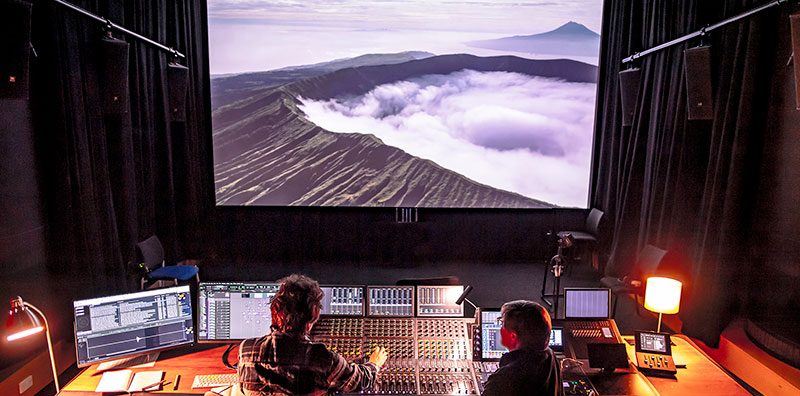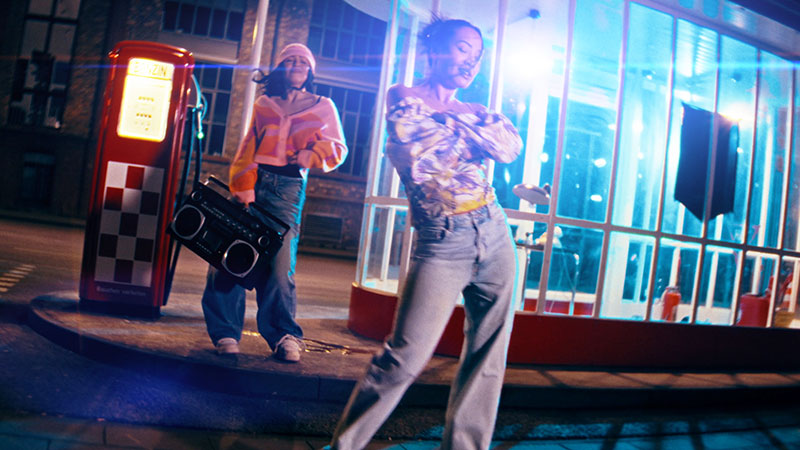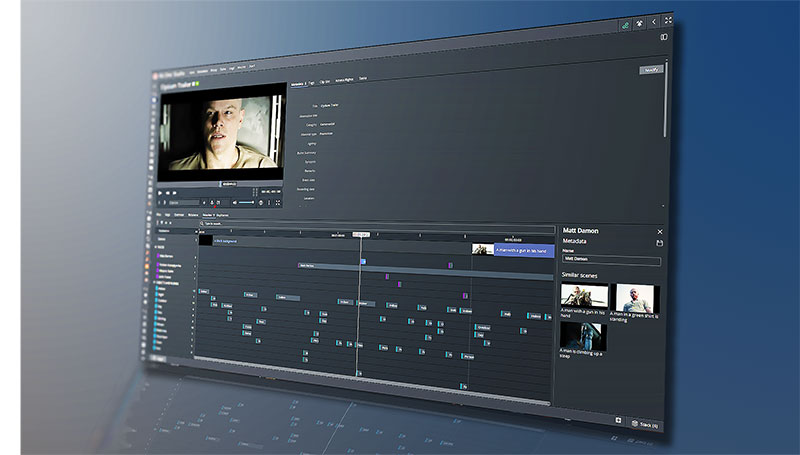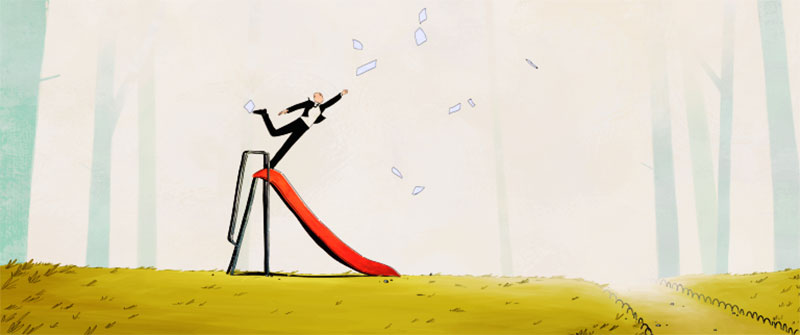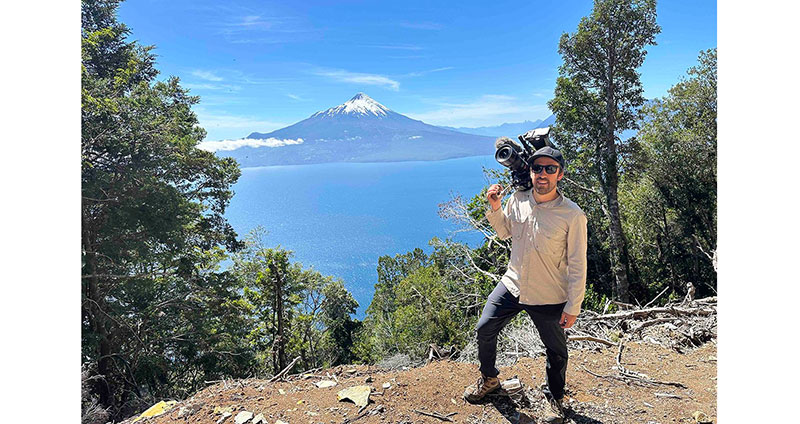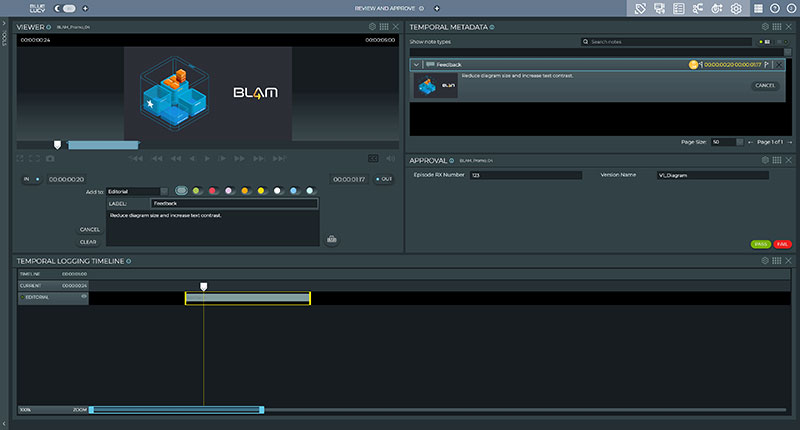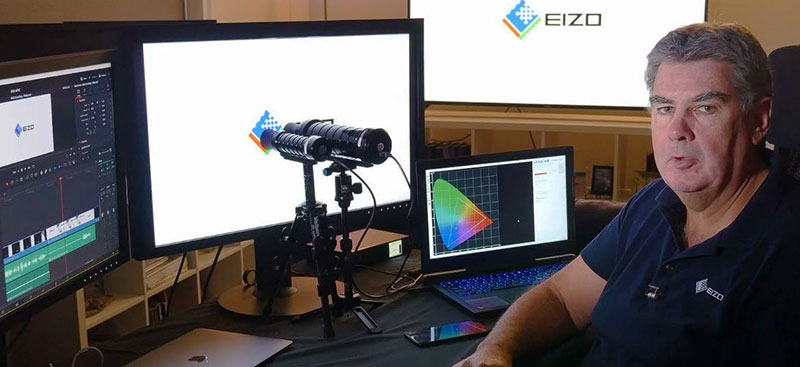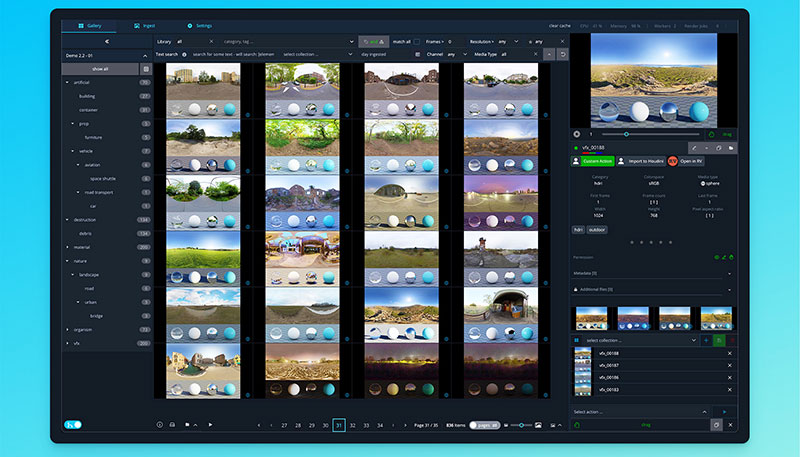Colourist Tom Cairns talks about launching Brick and Mortar, his new post facility in Glasgow, and installing Baselight grading suites and Scotland’s first DCI-compliant grading theatre.

Colourist Tom Cairns recently launched Brick and Mortar, a new post facility in Glasgow, where he leads the colour department. Having trained and developed his skills at facilities including Molinare, Twickenham Film Studios and Dirty Looks, Tom is regarded a top colourist, responsible for beautiful, expressive grades supporting the work of some of the most accomplished directors and DoPs producing films today.
His grading credits include Chris Andrews' Bring Them Down (2025) for Mubi, Moin Hussain's Sky Peals (2023) for BFI and Film4, and Rapman's Blue Story (2019) for BBC and Paramount.
Starting with Passion
Realising early on that he would only be able to pursue a career in something he was passionate about, his obsession with film soon led him into film school. “I thought I would go and see what stuck. I learned a huge amount, but when I left I was still no wiser about what I was going to do,” he said.
“I had one or two false starts in London before landing as a runner in a big broadcast post house, Prime Focus, where I had vague hopes of becoming an editor. Here, I was very lucky to be guided by some truly excellent management and colleagues, who all put a huge amount of time and effort into the support, training and progression of their staff. I made my way through offline, then online assisting – progressing, but still unsure of what direction to take.
“Then, one day, I was introduced to the grading suite, helmed at the time by Alex Gascoigne and Kevin Horsewood, and my eyes were opened to the possibilities of what could be achieved. It was a ‘stars aligning’ moment for me.”
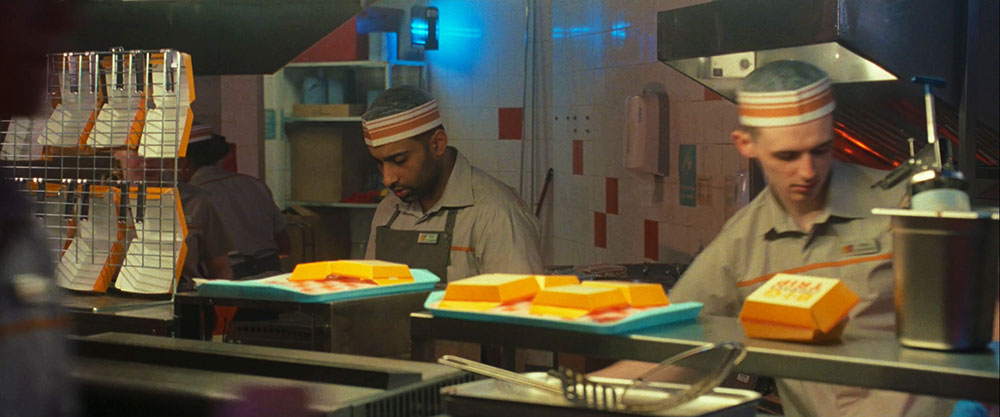
From there, Tom joined Molinare’s expert DI team, working on projects like Ex Machina, The Crown, Dr Who and Brooklyn. It was a big step up, but it confirmed his conviction that this was what he wanted to do. “The colourists there like Asa Shoul, Gareth Spensley, Jat Patel and Chris Rodgers are considered some of the best in the world to this day, and I was very lucky to learn from them. I spent every moment I could sitting in on grades, training, and grading as many shorts or music videos as I could get my hands on,” he said.
Next, he was hired as a colourist at Twickenham Studios’ new Picture Department. Though he calls the experience a ‘baptism of fire’, taking a front line role on post for films from celebrated filmmakers like Catherine Goldschmidt, Andrew Dunn, Ari Wegner, Nanu Segal and Nick Cooke tested and developed his skills even further.
Going to Glasgow
After spending several years progressing his career, Tom decided to make the move to Glasgow, where he had found a thriving pool of talent, skilled in production and post. There, he met a group of people who believed strongly in Scotland’s potential for film. “We decided to set up Brick and Mortar, and launched at Berlinale in 2024,” he said.
Brick and Mortar is an artist-led post-production company focusing on offline editorial, colour grading and picture finishing for feature film, drama and commercials. The facility recently benefited from substantial investment in new suites and infrastructure, including the installation of Baselight grading systems and Scotland’s first and only DCI (Digital Cinema Initiatives)-compliant grading theatre.

“On coming to Scotland, one of the things that hit me, aside from the incredible wealth of talent here, was the glaring omission of a grading theatre to service all the wonderful film work that is made here,” Tom said. “As we explored the potential of a new post house – that also runs Scotland’s only grading theatre – and opening it up to top of the range film and commercial talent, we realised we had an opportunity.
“We had the chance to not only give productions in Scotland the option to finish locally, but also set a standard that encourages creatives across the country and around the world to bring their grades here.
Making It Personal
Tom is head of the colour department at the facility and takes the creative lead on all aspects related to colour, workflow, development and bringing on new colour talent. He feels fortunate to be able to work on a wide range of content from features, drama and documentaries to commercials.
With the perspective gained from working at a range of well-known studios, both large and small, Tom feels that the common thread running through successful, enjoyable work is a very personal, collaborative approach. “That environment breeds the best creativity and results. As a result, Brick and Mortar has developed as an intimate, scalable editorial and colour team. It effectively supports a tailor-made, personal environment where directors and DoPs can put their images in safe hands and see their best work come to life,” he said.
Ergonomics, Functionality and Exploration
About installing Baselight at the studio, he remarked, “I've been grading on Baselight for just over 13 years and I've come to take for granted its solid colour management, as well as the support from the FilmLight team.”

The ergonomics, functionality and experience of grading with Baselight have always felt efficient and natural to him, in terms of both the interface and the controls. He also appreciates that the operator can always find new ways to push looks which, in turn, boosts confidence and relaxes the experience for everyone in the room – no matter how demanding the grade may be.
“To this day I am still experimenting with new tools and combinations of tools to enhance the storytelling and experience of the image,” Tom commented. “The involvement of the FilmLight team to push the software’s potential brings an exciting feeling of originality and exploration to every project. From the point of view of a smaller facility, much like our introduction of a grading theatre, Baselight is a key tool that lets us punch well above our weight compared to other similar-sized facilities.
“So far in Baselight 6, I have been impressed the most by the Chromogen look development tool. I feel I am only scratching the surface but, within moments and in just a few stages, you can create powerful looks that roll off from highlights or shadows without any harshness. The possibilities feel truly endless. Including Chromogen as a regular feature of a colourist’s work with a DoP on look development, is something I am very keen to push for. I think it will be very exciting for both colourists and DoPs.
Invisible Colour
Tom believes that colour is more influential than it has ever been, and notes that modern audiences are much more educated in colour’s role in the ability of images to communicate. People are now accustomed to capturing and manipulating their own media, which causes him to wonder how the aesthetic of TV and cinema may change, but also means viewers know more than ever what is possible.

He said, “So, our responsibility is a fun tightrope of pushing the envelope and exciting people, while remaining invisible. We still honour a love of the cinematic language that makes people feel comfortable enough to suspend their belief for two hours in a dark room. Our role of manipulating colour will first and foremost remain to aid in the power of the story and to create an emotional response without being noticed.”
Leonora in the Morning Light
Leonora in the Morning Light is a film about the life of the surrealist painter Leonora Carrington, and marked a series of firsts for Brick and Mortar. It was their first feature, the first project in their new grading theatre, and Tom’s first time working with all the new tools in Baselight 6.0. The film stretched their capabilities, as it includes settings such as early 20th century surrealist house parties in Paris, the Mexican jungle, rural France and hospitalisation in post-WW2 Spain.
Tom said, “I worked with the DoP Tudor Vladimir Panduru, who had already painstakingly created distinctive looks for the project on set for the dailies to represent the period and different locations around the world. To do this, Tudor used the Video Village Filmbox plugin, which manipulates digital cinema footage to display the grain, halation and colour response of motion picture film.
“These looks went beyond the palette alone, but also included key elements of the texture. We wanted to honour this and used print and negative LUTs output from Filmbox for the show looks for the different locations, then created a Chromogen look to take it further and to ground the narrative into one world, which rolled off naturally from the highlights. Chromogen was especially useful here because it allows you to adjust and fix parts of a LUT.

“Finally, we rebuilt the textures in order to keep as much control as possible of the fairly complex grain structures, halation and glow, and then used Baselight’s texture equaliser to access the texture frequencies.”
The X Grade tool very quickly became a favourite for Tom. It allows the user to make multiple localised, complex corrections in a single layer, without having to create a key or matte, and to take advantage of selective, non-destructive colour manipulation.
So far, Tom estimates that he has graded close to 40 films. However, he added, “But I still feel I’m just at the start of my career, and very excited about what is yet to come.” www.filmlight.ltd.uk




